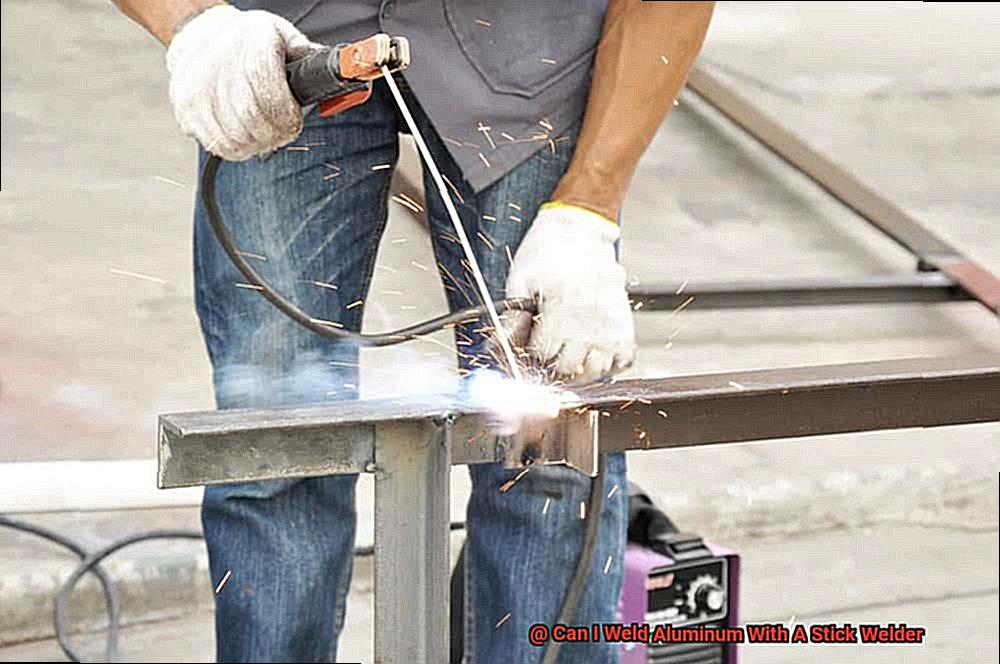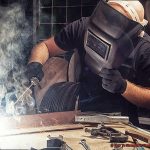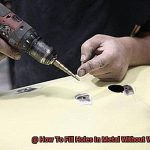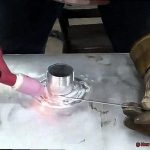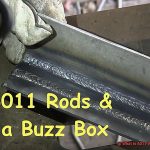Welcome to the exciting world of welding. If you’re considering welding aluminum, you might be wondering- Can I Weld Aluminum With A Stick Welder? Well, the answer is a bit complicated. Yes, it’s possible to weld aluminum with a stick welder, but it’s not an easy feat. It requires a lot of practice, patience, and skill.
Before we dive into the nitty-gritty of the process, let’s first understand what a stick welder is. Also known as Shielded Metal Arc Welding (SMAW), it uses a consumable electrode coated in flux to lay the weld. The flux acts as a protective layer against oxidation and atmospheric gases. When the stick comes into contact with metal, the flux melts and creates a shield that protects molten metal from surrounding air.
However, welding aluminum with a stick welder is challenging because it’s known for being an excellent thermal conductor. This means that it requires a tremendous amount of heat to weld properly. Unfortunately, the heat produced by a stick welder is typically insufficient to achieve proper results.
In conclusion, if you’re new to welding or looking for an easy project, then welding aluminum with a stick welder isn’t recommended. However, if you’re an experienced welder seeking an exciting challenge and have access to specialized equipment like high-frequency TIG or MIG machines that can produce enough heat for aluminum welding- then go ahead and give it a try. With patience and practice, you can master this technique too.
What is Stick Welding?
Contents
Stick welding, also known as Shielded Metal Arc Welding (SMAW), is a fascinating and versatile welding process that has been around for over 100 years. It’s a process that uses a consumable electrode coated in flux to create an electric arc that melts the metal and joins the pieces together. This method is commonly used for welding steel, but it can also be used for aluminum.
One of the primary advantages of stick welding is its versatility. This welding process can be used in various positions, including vertical, horizontal, and overhead welding. This makes it a popular choice for welding in difficult-to-reach areas or on projects that require welding in multiple positions.
In addition to its versatility, stick welding is also relatively inexpensive compared to other welding processes. This makes it accessible to many hobbyists and small businesses who may not have the budget for more expensive equipment.
However, when it comes to welding aluminum with a stick welder, several challenges need to be considered. Aluminum has a higher melting point than steel, which means that a higher amperage is needed to create a strong weld. Although stick welding can be used to weld aluminum, it may not provide enough heat to melt the aluminum properly and create a solid weld.
Another challenge with stick welding aluminum is that it requires a different type of electrode than steel. A specialized electrode made of aluminum or aluminum alloy is needed to weld aluminum effectively. These electrodes are expensive and challenging to find in hardware stores, making stick welding aluminum more challenging for hobbyists and DIY enthusiasts.
Despite these challenges, it’s possible to weld aluminum with a stick welder successfully. To do so effectively, proper technique and precautions must be taken. It’s essential to use an electrode designed explicitly for aluminum, adjust the amperage settings accordingly, and remove any oxide layer on the surface of the metal.
Types of Electrodes for Aluminum
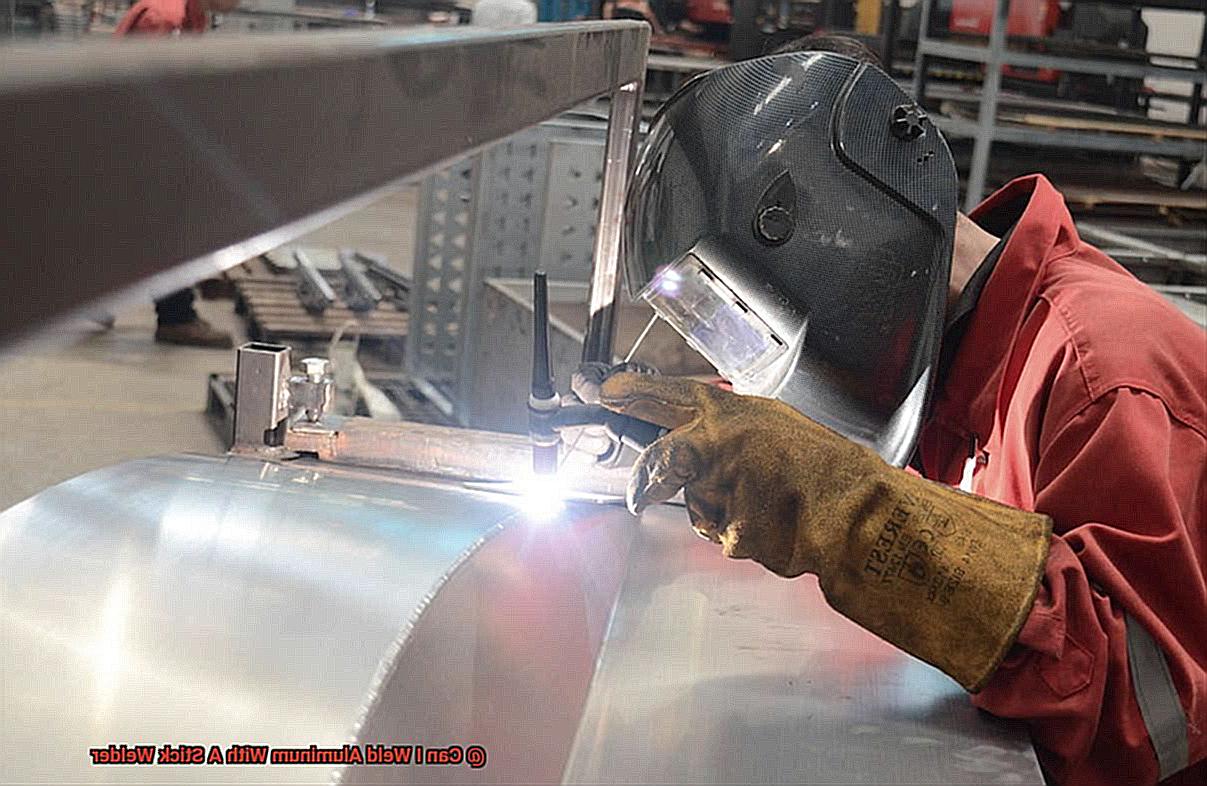
Welding aluminum with a stick welder requires skill and precision, but choosing the right electrode is just as critical. The three types of electrodes that can be used for aluminum welding with a stick welder are pure tungsten, aluminum oxide, and zirconiated tungsten.
Pure tungsten electrodes are perfect for welding thinner pieces of aluminum since they don’t have any additives or coatings that could contaminate the weld. However, their lower current carrying capacity makes them less suitable for thicker aluminum pieces.
Aluminum oxide electrodes provide a higher current carrying capacity than pure tungsten electrodes, making them a better choice for thicker aluminum pieces. But, they have been known to create a thick oxide layer on the surface of the weld, which can make it difficult to get a clean finish.
Zirconiated tungsten electrodes produce the cleanest welds compared to pure tungsten and aluminum oxide electrodes. They have a higher current carrying capacity than pure tungsten, making them an excellent choice for thicker aluminum pieces. However, these electrodes can be more expensive and may not be readily available at all welding supply stores.
Amperage Settings for Aluminum
Welding aluminum with a stick welder is a true test of skills, precision, and patience. And if you want to get it right, you must pay attention to the amperage settings. Unlike steel, aluminum requires lower amperage settings due to its lower melting point. Setting your machine too high can burn through the metal, while setting it too low can cause cold welds that lack penetration.
As a rule of thumb, for stick welding aluminum, set your amperage between 70 and 100 amps. However, this may vary depending on the thickness of the aluminum you are welding. Thinner aluminum sheets may require lower amperages, while thicker ones may need higher amperages.
But beware. Stick welding aluminum is no easy task, even for the most experienced welders. Aluminum is highly conductive and quickly dissipates heat, making it challenging to maintain a stable arc. So, be patient and take your time to master this tricky metal.
To achieve high-quality results when welding aluminum with a stick welder, experiment with different amperage settings until you find the right one for your specific project. Keep in mind that maintaining a stable arc is critical to achieving beautiful, long-lasting welds.
Challenges of Stick Welding Aluminum
Stick welding aluminum is a daunting task that requires skill, patience, and the right equipment. One of the biggest challenges of welding aluminum is its high thermal conductivity, which makes it tricky to maintain a consistent temperature and prevent warping or distortion during welding.
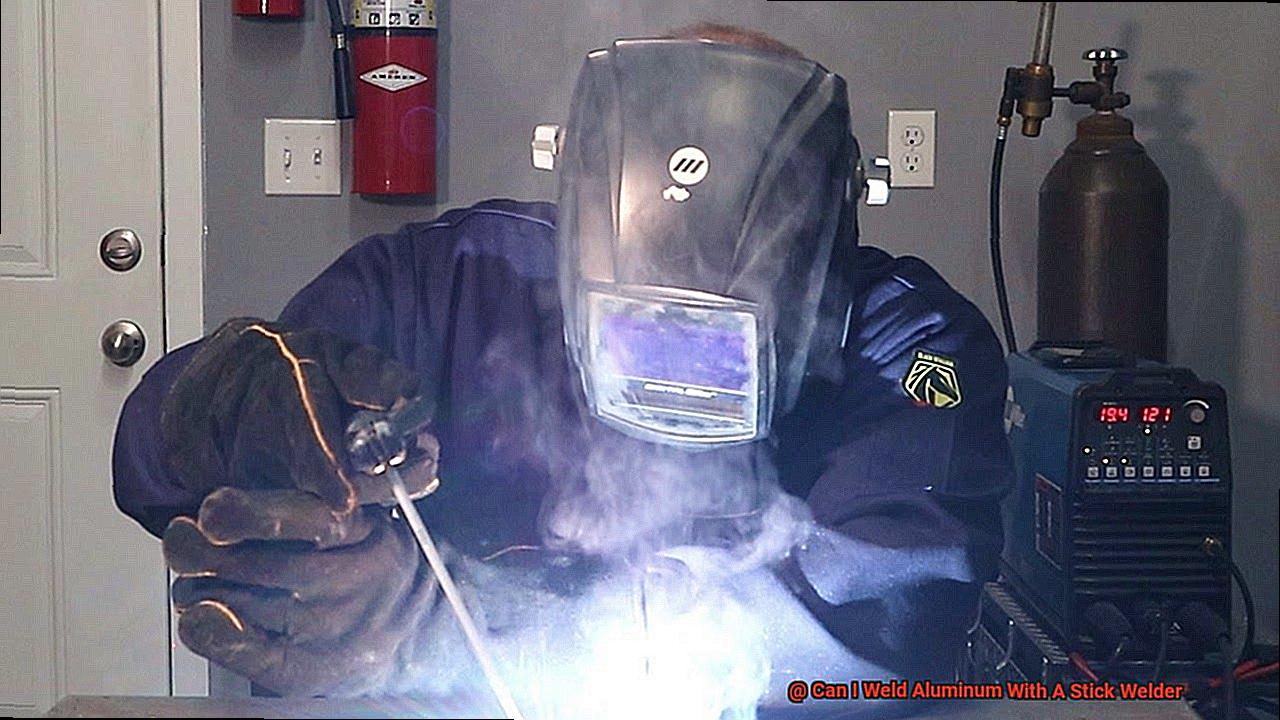
To overcome this challenge, you need to use an electrode specifically designed for aluminum, such as the E4043 electrode. This is because most stick electrodes are designed for steel, which makes them unsuitable for use with aluminum. Additionally, using the right welding technique is key. For instance, you should aim to use a shorter arc length than you would when welding steel to prevent the electrode from sticking to the workpiece and maintain a stable arc.
Getting good penetration is another challenge when stick welding aluminum since it requires more heat than other metals due to its high melting point. Achieving good penetration without overheating the metal or causing other issues takes time and practice.
It is worth noting that stick welding aluminum is not recommended for beginners or those unfamiliar with welding. It requires skill and experience to master this tricky process. However, with the right equipment and techniques, you can produce high-quality welds on aluminum using a stick welder.
Pre-Weld Preparation for Aluminum
Welding aluminum may seem like a daunting task, but with the right pre-weld preparation, you can conquer this wild beast of a metal and achieve excellent results. Pre-weld preparation is critical for aluminum as it is prone to contamination and oxide buildup, which can lead to a weak weld. Here are some essential steps to follow before welding aluminum:
The first step is to clean the surface thoroughly. Any oil, grease, or dirt on the surface can lead to porosity and a weak weld. Therefore, it is crucial to use a stainless steel brush or chemical cleaner specifically designed for aluminum to remove any contaminants.
Next, it is important to remove any oxide buildup on the surface. Oxide buildup can prevent the filler metal from bonding properly with the base metal, leading to a weak weld. To remove oxide buildup, you can use a stainless steel brush or a grinder with an aluminum-specific wheel. However, it is crucial not to use a grinding wheel that has previously been used on other metals as it may contain impurities that can contaminate the aluminum.
After cleaning and removing oxide buildup, it is recommended to use a wire brush or solvent to eliminate any remaining residue on the surface. This will help ensure that the surface is clean and free of contaminants, ready for welding.
By following these pre-weld preparation steps, you can prevent porosity and ensure proper bonding between the base metal and filler metal. Remember that welding aluminum requires patience, skill, and the right tools. Take your time and work carefully.
_g-IWPYNIeI” >
Conclusion
To sum it up, welding aluminum with a stick welder is not for the faint of heart. It requires specialized equipment, patience, and skill to achieve high-quality results. Stick welding works by creating an electric arc that melts the metal and joins two pieces together using a consumable electrode coated in flux.
Although stick welding is commonly used for steel, it can also be used for aluminum. However, there are several challenges to consider before starting. Aluminum has a higher melting point than steel, which means you need higher amperage to create a strong weld. Plus, you need a different type of electrode made of aluminum or aluminum alloy.
Despite these challenges, proper technique and precautions such as using the correct electrode and adjusting the amperage settings accordingly can help you successfully weld aluminum with a stick welder. However, this method isn’t recommended for beginners or those unfamiliar with welding.
Pre-weld preparation is critical when working with aluminum as it’s prone to contamination and oxide buildup that can lead to weak welds. Properly cleaning the surface, removing oxide buildup, and eliminating any remaining residue will help prevent porosity and ensure proper bonding between the base metal and filler metal.
In conclusion, while stick welding may not be the most ideal method for welding aluminum, it’s still a versatile and cost-effective option for many projects.
